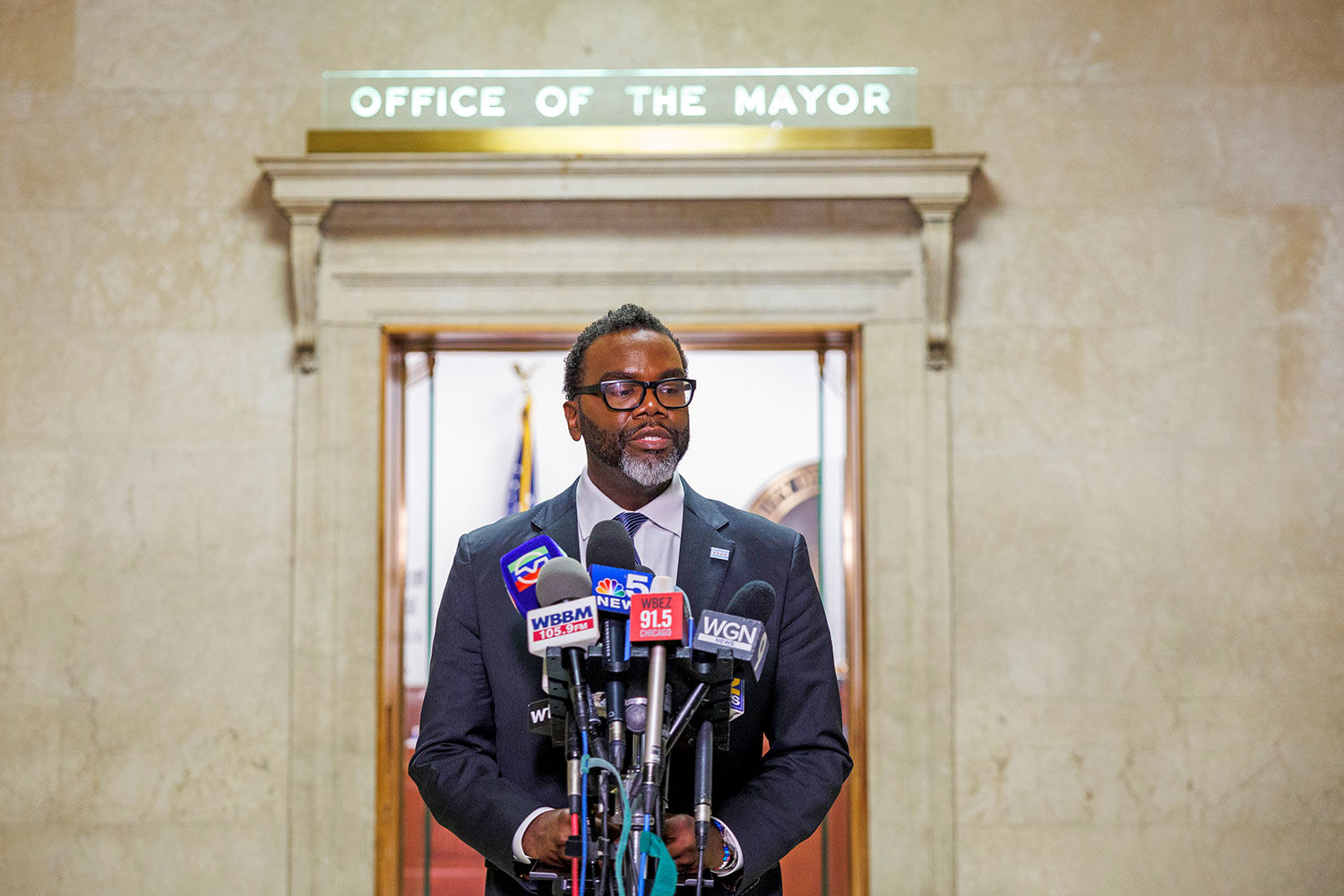In 1983, Ald. Richard Mell told Harold Washington, “Don’t make this city suffer for 300 years of injustice against your people. Don’t make me and others pay for it. Let’s not make this city another Detroit.”
In 2015, Sen. Mark Kirk suggested that mayoral candidate Chuy Garcia could not “command the respect of the bond market. The collapse of Chicago debt — which already happened with Detroit — would soon follow if somebody who is very inexperienced replaced Rahm [Emanuel.]”
In 2023, National Review contributor Jeffrey Blehar wrote, “Between electing Brandon Johnson mayor and the insane statewide ‘cashless bail’ law (passed during a regrettable fit of activist overenthusiasm post-Floyd) perhaps being upheld by the courts, Chicago is about to embark upon a Detroit-like experiment in governance, I fear.”
Do you see a pattern here? Whenever a progressive of color becomes mayor of Chicago, or threatens to do so, white politicians hear tribal drums and assume the newcomer will rule as the second coming of Coleman Young, who was elected mayor of Detroit in 1973. Since then, Detroit has lost 57 percent of its population, contended for the nation’s highest murder rate, and declared bankruptcy. Or Kwame Kilpatrick, the “hip hop mayor” who partied with strippers in the mayoral mansion, then was sentenced to 28 years in prison for racketeering, extortion, mail fraud, tax evasion, etc., etc.
Have any of these guys been to Detroit? Or did they just rent Transformers: Dark of the Moon, in which Detroit stood in for a devastated Chicago? I’ve been to Detroit. Dozens and dozens of times. I even wrote a book about it, mostly. Chicago will never look like Detroit, any more than it will ever look like Paris, San Francisco, or Decatur. Brandon Johnson could not govern like Coleman Young or Kwame Kilpatrick, even if he wanted to. And Chicago’s economic diversity, which contributed to its rise as the Midwest’s only global metropolis, guarantees it won’t follow Detroit into depopulation, destitution, and disorder.
Young took over Detroit in the year it became a Black majority city — the largest Black-majority city outside Africa. Whites began fleeing the city in large numbers after the 1967 riot killed 43 people, consuming Detroit far more than Chicago’s 1968 Martin Luther King riot, which was confined to the West Side. Young saw white flight as a way to consolidate power, by eliminating his critics. He was “a doorman to those with their bags already packed,” according to Paul Clemens’s memoir Made in Detroit. “His grip on Detroit tightened and the citizenry slipped between his fingers.” By the time Young retired, in 1993, Detroit was 80 percent Black.
“Under him, Detroit has become not merely an American city that happens to have a black majority, but a black metropolis, the first major Third World City in the United States,” wrote Ze’ev Chafets in his 1990 book Devil’s Night and Other True Tales of Detroit. “The trappings are all there — showcase projects, black-fisted symbols, an external enemy and the cult of personality. Detroit has even developed a quasi-official ideology that regards the pre-Young era as a time of white colonialism, ended by the 1967 insurrection and its aftermath.”
Kilpatrick campaigned for re-election on the slogan “Our Mayor,” which said a lot in two words.
Brandon Johnson, on the other hand, is taking over a city in which the Black population is declining — from 1.2 million in 1980, when Blacks were the largest ethnic group in Chicago, to 780,000 today, when they’re third, behind whites and Latinos. Demographic reality, and Chicago’s political tradition of building ethnic alliances, means Johnson has to rule as a mayor for all races.
The Black Chicagoans leaving the city are being replaced by college-educated whites, who are moving here to get away from places like Detroit. Why? Because Detroit was a one-horsepower town — dependent upon, and a metonym for, the automobile industry. The Big Three’s struggles, beginning during the recession of the 1980s, contributed to Detroit’s 2013 bankruptcy. Chicago has always had a diversified economic portfolio: not just manufacturing, but banking, insurance, commodities exchanges, and education. Chicago survived the demise of the steel mills because it was well-prepared for the day when trading things and thinking about things became more profitable than making things. Professional services became Chicago’s new “product.” In the global economy of the 1990s, which gutted so many Midwestern cities, Chicago was a winner, sucking business and talent out of its regional satellites — especially Detroit.
If Johnson succeeds as mayor, he will make Chicago look less like Detroit. Some parts of the city do, especially Englewood, which has experienced Detroit-level depopulation of 77 percent. Vegetation riots over vacant lots. Johnson says he wants to make Chicago “a city where every neighborhood is a neighborhood of opportunity, where local storefronts are bustling and new jobs sprout up in every corner of Chicago.” Every mayor promises to revive neglected neighborhoods. Lori Lightfoot spent money toward that, with her INVEST South/West program. Johnson actually lives in a neglected neighborhood — Austin — so he might do more than most mayors.
If you want to see Chicago turn into Detroit, watch Transformers. Brandon Johnson isn’t going to make it happen.
Related Content



